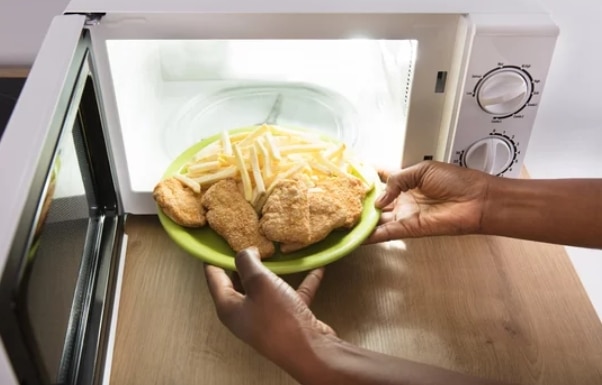A microwave oven has become a necessary kitchen appliance. Most of the people who do not currently own one have plans to get one. It provides a very convenient way of heating food up. Simply put your food in it, press a button, and in a few seconds or minutes, your cold food would have become heated up. Very convenient. But in that convenience lies serious concerns as to whether microwaving food is actually safe and what effects it has on the body.
Before we explore some of the effects, let us first understand how a microwave works.
How Does A Microwave Work?

A microwave oven makes use of technology that converts electricity into electromagnetic waves, otherwise known as microwaves. In that process, the waves affect the molecules in the food, effectively turning energy into heat, which makes the food hot. Microwave ovens release electromagnetic radiation, which is a non-ionizing kind of radiation. This is a serious concern for most people but non-ionizing radiation is considered safe. To understand better, it is the same kind of radiation given off by cellphones.
Now that we have understood the technology behind microwave ovens, let us now look at the effects of microwave on food.
Microwave and Nutrient Loss
There is often the thought that using microwave lead to serious loss of nutrients in food. First, you should understand that any form of cooking reduces the nutrients available in food. Other things affect how the nutrient is lost, such as the temperature and cooking time.
Microwaves make use of low heat and lesser cooking time, which means it does not drastically reduce the nutrients in your food. But it has been observed that microwave reduces some of the very essential nutrients.
For example, one study stated that it destroys up to 97% of flavonoids, which is an antioxidant, in broccolis. However, that has also been countered by recent studies which saw no drastic reduction in flavonoids. Instead, what has been agreed is that using too much water when microwaving food would reduce the nutrients in the food. So, it is advised that one uses as little water as possible when microwaving your food.
Studies show that many other cooking methods like boiling, and pressure cooking reduce the nutrients in the food more than a microwave. Basically, what we are saying is all cooking methods lead to loss of nutrients, including microwaving. However, microwaving might even cause less loss of nutrients compared to other methods.
Microwaved Foods with Plastic Containers Leads to Introduction of Harmful Particles
Using microwave with plastic containers adds harmful particles into the food. Examples of such particles are carcinogens, which are compounds that cause cancer. This happens when you heat the food using a plastic container. Plastic contains bisphenol-A (BPA), polyethylene terephthalate (PET), benzene, toluene, and more other toxic chemicals. What happens is when you heat food using a plastic container, these chemicals are absorbed by the food, which makes eating them very harmful. To avoid that, you should use ceramic wares that are microwave-safe to heat your food.
Many cooking methods like frying can cause the formation of harmful compounds in the food. However, microwaving may reduce the formation of harmful compounds that can form when cooking at high heat.
May Affect the Heart
Eating microwaved food may affect the makeup of the blood as well as heart rate. A study found out that those who ate microwaved food has an increase in white blood cells and a decrease in red blood cells as well as a rise in cholesterol levels.
Another study also noticed a change in heart rate after eating microwaved food, but not so much to be considered unsafe. The effect is not also long term and it is not considered a health issue. There are not been a lot of medical evidence to back this claim up.
May Not Kill All Microorganisms
It is advised that microwave should be strictly used for reheating food rather than cooking as it does not kill germs and bacteria in food. This is due to the low heat produced by the microwave and the fact that it cooks for a lesser time. Microwaves do have some downsides.
For instance, they may not be as effective as other cooking methods at killing bacteria and other pathogens that cause food poisoning. Sometimes, food heats unevenly, which means that some parts of the food will be heated, and some parts won’t be.
Conclusion
Contrary to what many people might think, using a microwave is quite safe and does not pose a risk to one’s health. Some things you can while using microwave to heat your foods is to never overheat or underheat your food. Also, don’t stand too close to the microwave, or heat any food in a plastic container with the microwave.



